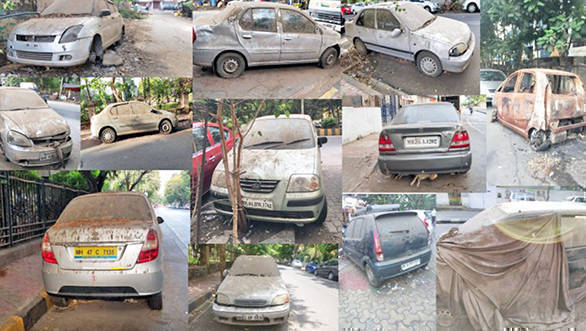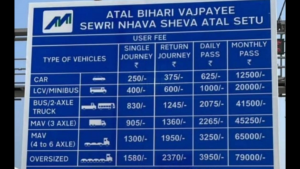Why are cars being left to die in Mumbai
On the occasion of 'World Environment Day' that was celebrated in June 2018, many projects to improve life on our planet commenced. Of course there was also talk of harmful vehicle emissions and moving to EVs (electric vehicles), with our government strongly advocating this too. But, sadly there is little talk about how electricity is produced in India. Most of it is generated by burning coal, which is extremely harmful to our environment. So moving to EV's will not help, simply because we shall have to burn even more coal to meet the increase in demand for electricity. What is needed is a multi-pronged approach. Sure it's necessary to have more EVs, but we must also have far cleaner or renewal sources of manufacturing electricity. Sadly, given the way we Indian's plan, work and execute, this is unlikely to happen. By opting for EVs we won't reduce the overall pollution, we shall just shift the source.
Another essential requirement for tackling pollution is the 'Vehicle Scrapping Policy', which has been a long time in the planning. Apparently it shall finally come into effect in 2020, but will only be applicable to commercial vehicles. A policy to systematically replace old and polluting vehicles is something that should have been in place at least 20 years back, when the auto industry started growing.
 Operation Khatara is an initiative to remove dilapidated vehicles deserted on our streets (Source: Mumbaialive)
Operation Khatara is an initiative to remove dilapidated vehicles deserted on our streets (Source: Mumbaialive)
Recently in Mumbai, some citizen groups have initiated 'Operation Khatara' to remove dilapidated vehicles deserted on our streets. They inform the BMC (Bombay Municipal Corporation) and police and ask them to take away what for some reason are also being termed as 'dead vehicles'. These cars occupy short in supply parking space and incidents of anti-social elements, hawkers and slum dwellers storing their goods and things in them have also been discovered. The authorities have responded positively to the citizen's appeal, but the usual bureaucratic debate of whose job it actually is, has started too. The police say they can tow away the vehicles but have no space to keep them. The BMC says it does not have enough towing vehicles or storage space. Fortunately, despite this, the 'Khataras' are being taken away and kept in yards and public parking lots, including those in shopping malls. The BMC says it will soon auction the seized vehicles that have not been reclaimed. It appears these cars are bought by scrap dealers basically for the metal. Unfortunately, this sector is not really organized and we still don't have the kind of wrecking yards or junkyards found in the west, where usable parts from decommissioned vehicles are put up for sale as spares and the rest of the vehicle is crushed and compacted and sold to metal-recycling companies. I don't think there are any practical rules either, for the disposal of environmentally harmful things like oils, toxic battery acids, rubber, plastics, etc.
Interestingly, very few cars picked up from the streets have been reclaimed by the owners and it makes me wonder why? Most of them have number plates, so identifying the owners should not be difficult. In fact it may be a very good and useful exercise for a research firm to find and speak to them. But until any such proper report of 'rationale for desertion' emerges, I will share a few probable reasons that come to mind. New cars have a fitness certificate issued by the manufacturer valid for 15 years. After its expiry, the owner needs to get a 'roadworthiness certificate' from the RTO (Regional Transport Office) that is then renewable every five years. I know from my own experience that getting and renewing this certificate of fitness is not an easy process and can be time-consuming, painful and also expensive in case all papers are not in order. If some taxes are unpaid, then the penalties and interest applicable can be very substantial too. Given this, I presume a fair number of people don't bother getting a new 'roadworthiness certificate', without which it cannot be sold or transferred. So the resale value becomes minimal and keeping the vehicle running may cost more than it's worth the while of the owner. The option, is to abandon it.
There is also the cost of maintenance. Let's says an owner has used the vehicle extensively and it's done a lot of mileage. To keep it running properly may require very costly major repairs, in some cases more than the resale value of the car itself. Reason enough to dump it. Then of course it may have been in an accident or natural calamity and may not be covered by insurance, again grounds for ditching it. There could be family or financial disputes, mortgaging of car registration papers with money lenders, etc. All of which could be causes for forsaking them.
While I certainly want to know the actual reasons for 'abandoning the cars', one thing intrigues me. Which are the makes and models people discard the most? In the photographs I have seen, one brand of cars appears quite often. Is it because they don't last and age very well? Or have good resale value? I have also seen few abandoned premium luxury cars, including German ones. Now what could be the reason for that? The only thing that comes to mind is major repair of highly expensive components like engine, transmission, etc. Or maybe they were too badly damaged in some floods, or such thing. It would be enlightening to get answers to this mystery.














